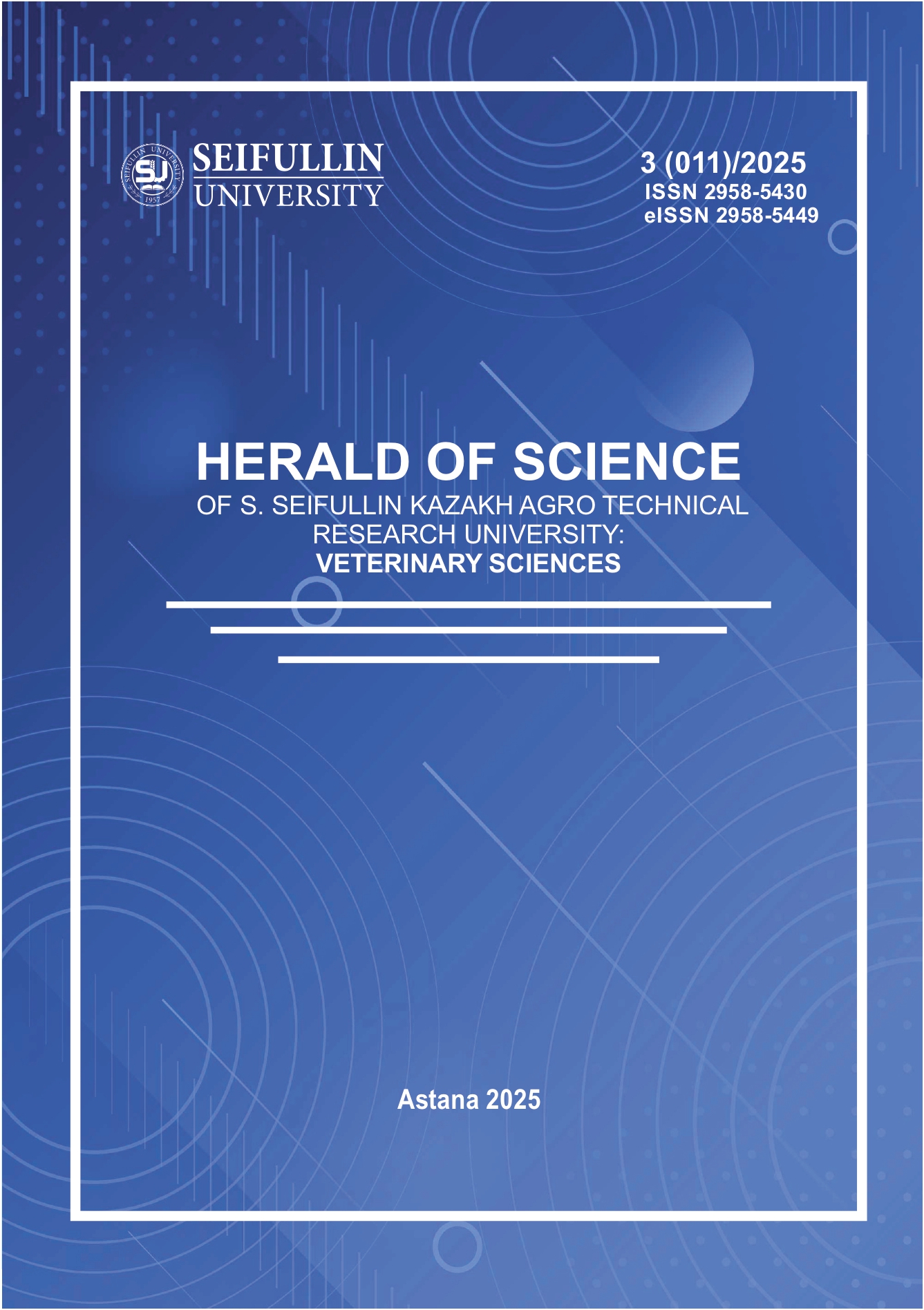Estimation of the prevalence of feline leukaemia virus in Astana, Kazakhstan
DOI:
https://doi.org/10.51452/kazatuvc.2025.3(011).2037Keywords:
Feline leukemia virus; cats; PCR; Exogenous forms (exFeLV); endogenous forms (enFeLV); sequencing.Abstract
Background and Aim. Feline leukemia virus (FeLV) is one of the most important retroviral pathogens in domestic cats, causing immunosuppression, anemia, lymphoma, and leukemia. FeLV exists in two forms: exogenous (exFeLV), which is infectious and horizontally transmitted, and endogenous (enFeLV), which is inherited as integrated proviral sequences. Differentiating between these forms is essential for accurate epidemiological assessment and diagnostics, since enFeLV sequences can interfere with molecular assays and lead to false-positive results. This study aimed to evaluate the prevalence of endogenous FeLV sequences in domestic cats in Astana and to determine whether exogenous FeLV was actively circulating in this population.
Materials and Methods. A total of 203 whole-blood samples from domestic cats were collected during routine veterinary examinations, and genomic DNA was extracted using a modified Kanai method. Two independent real-time PCR systems were employed: primers targeting the conserved env region to detect enFeLV, and primers specific to the U3 region of the long terminal repeat (LTR) to identify exFeLV. Amplifications were performed on the CFX96 Touch platform, and samples with quantification cycle (Cq) values <40 were interpreted as positive.
Results. Of the 203 analyzed samples, 197 (97%) were positive for enFeLV sequences, confirming the widespread presence of endogenous retroviral elements in the genome of cats, while no amplification was detected with U3-specific primers, indicating the absence of active exFeLV infection. The Cq values for enFeLV-positive samples ranged from 11.24 to 37.04, reflecting variability in proviral copy number among individuals. These findings demonstrate that enFeLV is nearly ubiquitous among domestic cats in Astana, while no evidence of exFeLV circulation was detected.
Conclusion. The results underscore the importance of using U3-LTR specific assays to reliably differentiate endogenous from exogenous forms of FeLV and to avoid false-positive diagnoses. Further studies should focus on monitoring potential recombination events between enFeLV and exFeLV, evaluating the expression of endogenous loci, and assessing their role in disease pathogenesis.

